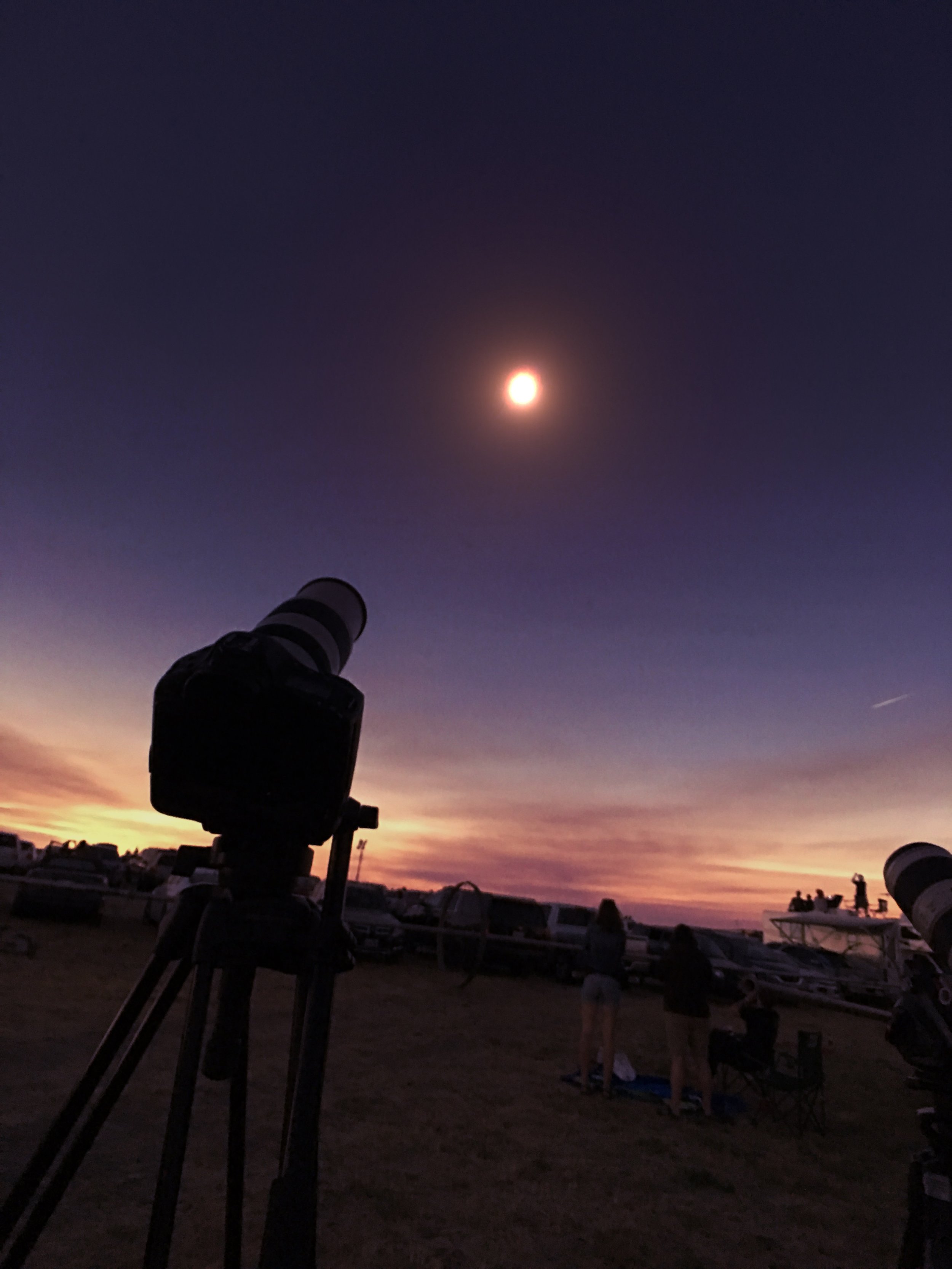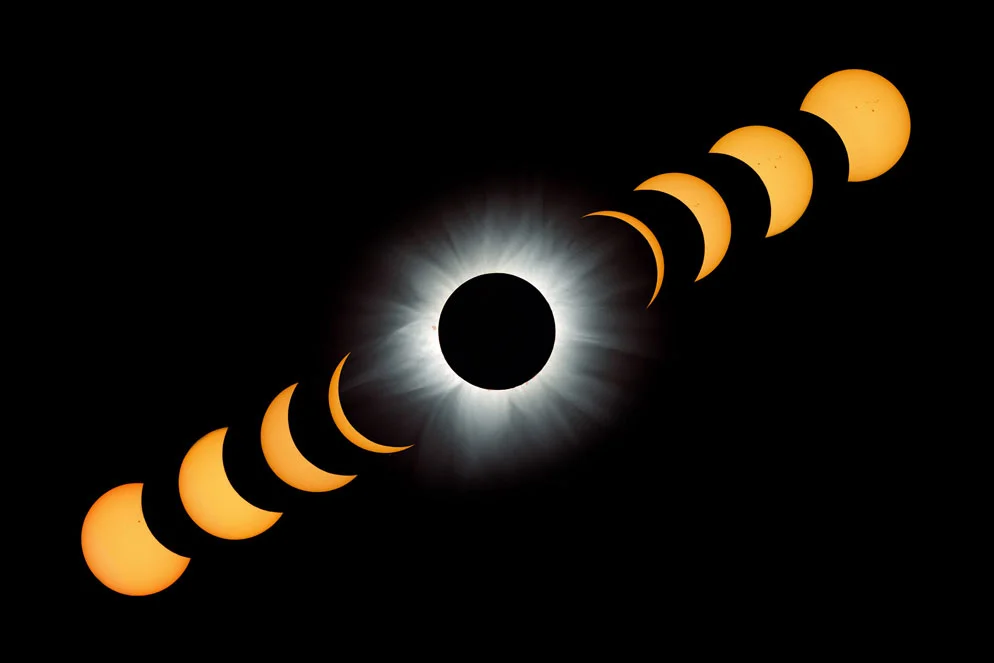Our Experience With the Total Solar Eclipse
See our photo-journal chronicling our journey to capture the eclipse.
DID YOU KNOW?
The next total solar eclipse in North America is April 8, 2024. Mark your calendar!
Here’s the Total Solar Eclipse schedule for Europe
FOR FUTURE REFERENCE:
How to Photograph a Solar Eclipse
Here is an article from my friends at Pictureline. It's one of the best I've read on the topic.
https://blog.pictureline.com/photograph-solar-eclipse/
"Whereas lunar eclipses are safe to view with the naked eye, solar eclipses are not. You must take the necessary precautions to keep from harming your eyesight. In fact, you also need to use a “solar filter” to keep from harming your camera’s imaging sensor as well as for correct exposure.
A solar eclipse occurs whenever the moon’s shadow falls on Earth. This can only occur during a new moon, when the moon passes between the sun and Earth. There are two or more solar eclipses a year; which occur when the geometry lines up just right, so that part of the moon’s shadow falls on Earth’s surface and an eclipse of the sun is seen from that region.
Partial and Total Solar Eclipses
The moon’s cone-shaped shadow has two parts, the penumbra and the umbra. The penumbra is the moon’s faint outer shadow and partial eclipses are visible from within the penumbral shadow. The umbra is the moon’s dark inner shadow and total solar eclipses are visible from within the umbral shadow. The track of the moon’s umbral shadow across Earth is called the Path of Totality, and it covers less than 1 percent of Earth’s surface area (typically 10,000 miles long and about 100 miles wide.)
A solar eclipse begins as a small notch slowly appears along one edge of the sun. During the next hour, the moon will gradually cover more and more of the sun’s bright disk. If the eclipse is a total solar eclipse, the last remaining minutes of the partial phases can be dramatic. The crescent of the sun grows thinner as the moon’s shadow approaches. The abrupt darkness of totality is stunning to view, and the solar corona is an awe-inspiring sight. The sun’s corona can only be seen during the few brief minutes of totality."
Two Videos Worth Watching
Finding the Best Place to Experience the Total Solar Eclipse
See what Space.com has to say about the eclipse.
Getting The Right Gear
Solar Glasses
The cheapest option are flat cards, slightly larger than a credit card, that have the solar film embedded in them. However, they require at least 1 hand to hold them over your eyes. I have 3 of them. I plan to bring plastitack and to stick one of them over my iPhone lens, if needed.
You can also get glasses:
10-pack of cardboard glasses (like the old 3D 'glasses'): $8.99
Plastic frame (like tradition sunglasses) w/2 paper glasses included: $19.95
Solar Filters
You can get camera filters, which tend to come threaded, or telescope filters, which tend to have 3 screws you use to mount over a range of lens sizes.
Be sure whatever you get is compatible with the lens(es) you want to use.
One of our committee members has a 55-300mm Nikkor lens that is 58mm wide. He ordered this 58mm camera filter for it: https://smile.amazon.com/gp/product/B0068V23KA.
It's glass and gets good reviews. A bunch of vendors sell it, but I paid an extra $5 for a vendor that uses Prime shipping. The others were shipping from Japan.
There's also a popular filter for telescopes, though it should also fit on camera lenses. Note that it says it's '80mm' but that's the total width. It is designed to fit on lenses from 50mm to 72mm. It uses "AstroSolar" film which is supposed to give excellent optical resolution.
Lenses
What is the best lens focal length for photographing the total solar eclipse? Well, there really isn’t a perfect answer to that question. There are many factors involved, so let’s outline some options for different types of cameras and budgets.
Read the rest of the article here:
Another Post from B&H
When the moon passes directly between Earth and the sun, those on Earth are treated to one of nature’s greatest spectacles—a total solar eclipse. It is a phenomenon that almost every observer would like to capture in a photograph.
Due to the rarity of the event, the short duration in which to capture it, and the dynamic nature of the subject, it is one of those photographic opportunities that requires the proper gear, setup, planning, and practice.
Some Additional Information About the Eclipse
A partial lunar eclipse will take place on August 7/8, 2017, the second of two lunar eclipses in 2017. The Moon will only be slightly covered by the Earth's umbral shadow at maximum eclipse.
The eclipse chart on the right shows the right-to-left hourly motion of the moon through the earth's shadow. The moon inside the umbral shadow will be a subtle red, but hard to see in contrast to the much brighter moon in the outer penumbral shadow.
The solar eclipse of August 21, 2017 occurs fourteen days later, in the same eclipse season. It will be the first total solar eclipse visible in the contiguous United States since the solar eclipse of February 26, 1979.
Add Mitchell's Journey Foundation to your Amazon Smile purchase and support our programs with your purchase.
Amazon donates 0.5% of the price of your eligible AmazonSmile purchases to the charitable organization of your choice.
AmazonSmile is the same Amazon you know. Same products, same prices, same service.
Support your charitable organization by starting your shopping at smile.amazon.com

















